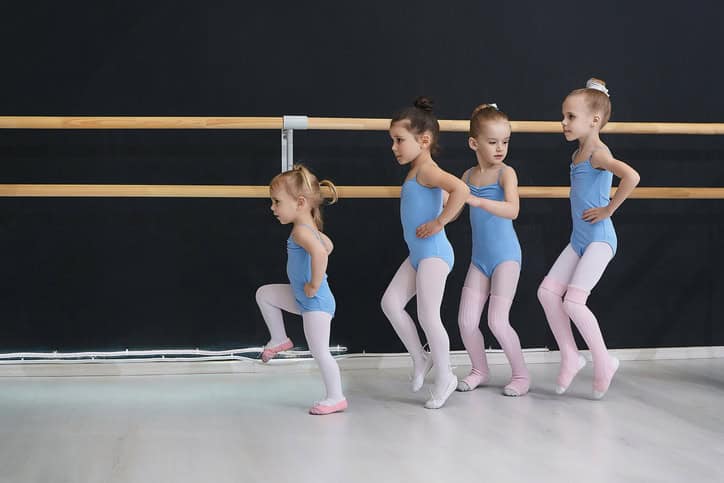Preschool Recital Success: The Backstage Experience

For little ones, the recital can be a scary situation. Think about it…We’re in a new space, with new people, in an uncomfortable costume, away from our grownup. That’s a lot to process! I liken the preparation for a recital to the first day of a dance class by focusing on setting expectations for both children and their caregivers, well ahead of the performance. When recital day finally arrives, we then have our magical tools and strategies to help children work through their big feelings and conquer this new experience.
Waiting for our big moment on stage can oftentimes be the most challenging part of the entire day. Today, I’m sharing what I always pack in my backstage busy bag to help the time fly by and make it a fun part of the experience, as well.
- Coloring Pages or Coloring Tablecloths. I like to have these set out and ready for our little ones as they arrive. This gives them something to do independently, while I assist in getting all our little ones gathered after drop off.
- Books for Reading. Reading, or looking at picture books, is a quiet activity that can be done independently or with backstage helpers. Board books will last longer. I recommend you either keep the books in a different station than the coloring pages or wait to bring them out after the coloring is complete. Otherwise, your reading books could become coloring books.
- Books for Movement. If we have the space and ability to use our inside voice, rather than our backstage whisper voice, I like to have some movement books on hand. We know little ones aren’t built to stay still for too long. This is why, if I can, I will always incorporate movement while they wait. It gets their wiggles out and helps them regulate any big feelings they may be experiencing. Two of my favorite movement books are Dear Zoo by Rod Cambell (we move like the animals) and From Head to Toe by Eric Carle.
- Portable Speaker. If you have the ability to play music and not interfere with the performance, I always recommend bringing a portable speaker. You can play calming music or familiar favorites to improve the mood while everyone waits.
- Scarves for Independent Play. Dancers who may be experiencing fear, anxiety, or sadness from being away from their grownup, may benefit from holding onto something. A colorful scarf is a familiar prop that could do just the trick. If you are able and have the space, you could do a freeze dance or scarf movement activity.
- Parachute or Stretchy Band for Group Play. If you have the right amount of dancers, the space, and ability to use inside voices, you could bring out the parachute for some group play. Dancers can sit in a seated circle as you shake, bounce, sway, and lift the parachute.
- Finger Play Songs. Live singing favorite finger play songs allows you to control the volume, actions, and suspense while keeping little ones engaged and excited to follow along. Some of my favorite finger play songs include Open Shut Them, Itsy Bitsy Spider, Wheels on the Bus, and Baby Shark.
Here’s to a wonderful recital where we connect with our students where they are, and help them through this important step of their dance journey!
Andrea Trench is dedicated to helping dance teachers create and deliver content that is research-based and developmentally appropriate for children under the age of 6. Her primary focus is classroom management, conceptual teaching, and foundational movement skill development in early childhood dance education. In addition, Andrea uses her 12 years of experience as a partner in a dance studio to inspire, equip, and empower educators.








